Para ler em Português, clique aqui
The MENTOR Initiative in collaboration with the Angolan National NTD Control Program, the Kirby Institute of the University of New South Wales Sydney, and the Expanded Special Project for Elimination Neglected Tropical Diseases (ESPEN), with support from The End Fund is working to understand the impact of a 5 year mass drug administration (MDA) and WASH programme aimed to reduce the incidence and prevalence of two prevalence neglected tropical diseases, Schistosomiasis (SCH) and Soil Transmitted Helminths (STH), in 3 high risk provinces of Angola. By mapping the prevelance and intensity of both infections, the study aims to quantify the progress achieved for SCH and STH control in targeted provinces. The mapping is taking place among school aged children 6 to 11 years in Huambo, Uíge and Zaire.

1. Mapping in Huambo
The teams have so far surveyed 11,580 school aged children in a total of 384 schools across Uige and Zaire. The team is now starting their work in Huambo province where 6,600 SAC and 220 schools will be invited to participate in the assessment.

2. Registering an SAC to take part in the survey providing a unique ID number
Diagnostic methods for both SCH and STH will utilise WHO standard reference techniques to determine presence/absence of infection. Prevalence of SCH is being determined by point-of-sampling rapid diagnostic tests (RDTs): circulating cathodic antigen (CCA) and Hemastix reagent strip.
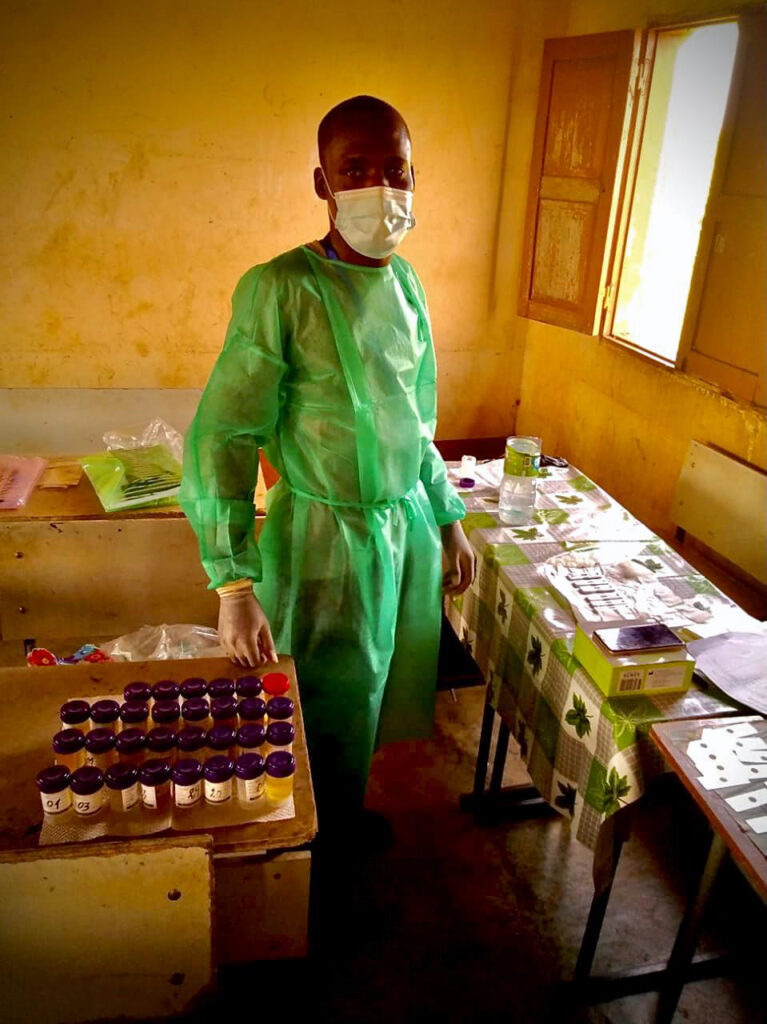
3. Team member preparing urine samples for RDT analysis
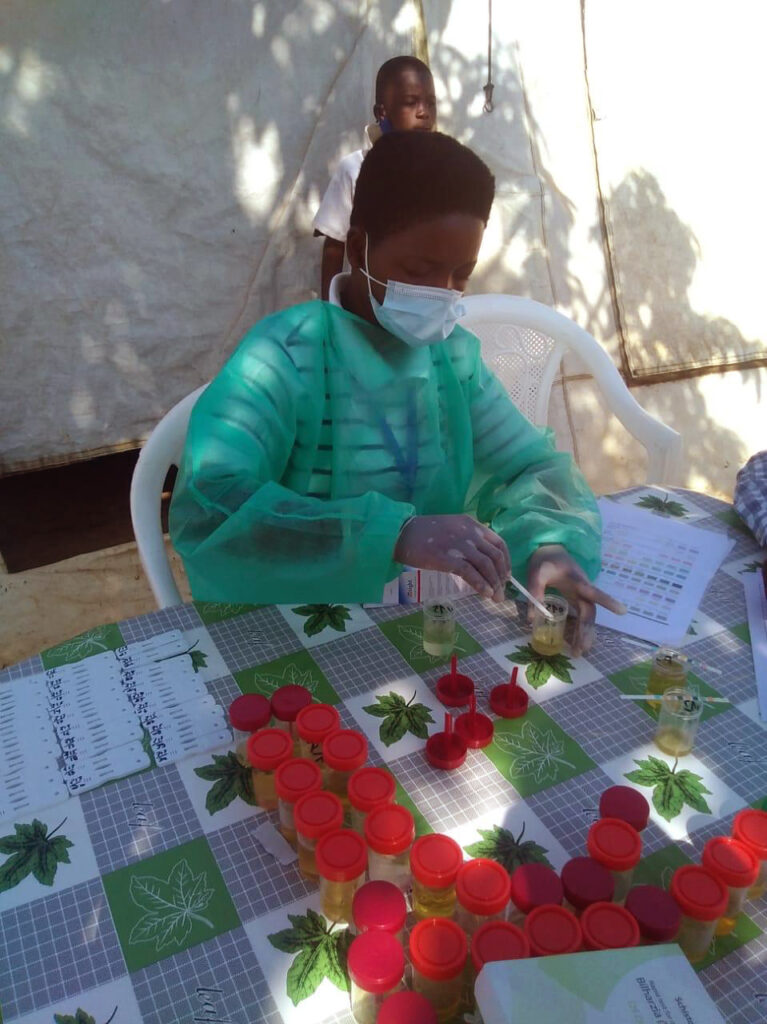
4. Team member performing RDT
Schools will also participate in a microscopy assessment using urine filtration to determine the SCH prevalence and infection, and the detection and quantification of S. mansoni and S. haematobium.

5. Team member preparing for microscopy using urine filtration
Prevalence and infection intensity of STH species will be determined through microscopy only, using the Kato Katz technique. A sub-set of stool samples will also be analyssed using quantitative polymerase chain reaction (qPCR): an increasingly recognised method for detecting and quantifying STH infection that can distinguish between hookworm species (Necator americanus, Anyclostoma duodenale, A. ceylanicum) which may contribute differently to hookworm associated morbidity in SAC.

6. Team member preparing stool samples for Kato Katz technique
Regional and national WHO representatives have also participated in the assessment, particularly WHO ESPEN, who were engaged to support with all data collection processes. The use of a digital data collection platform proved invaluable to tracking and monitoring the quality of data collected and overall survey progress, as well as providing prompt preliminary insight into results.
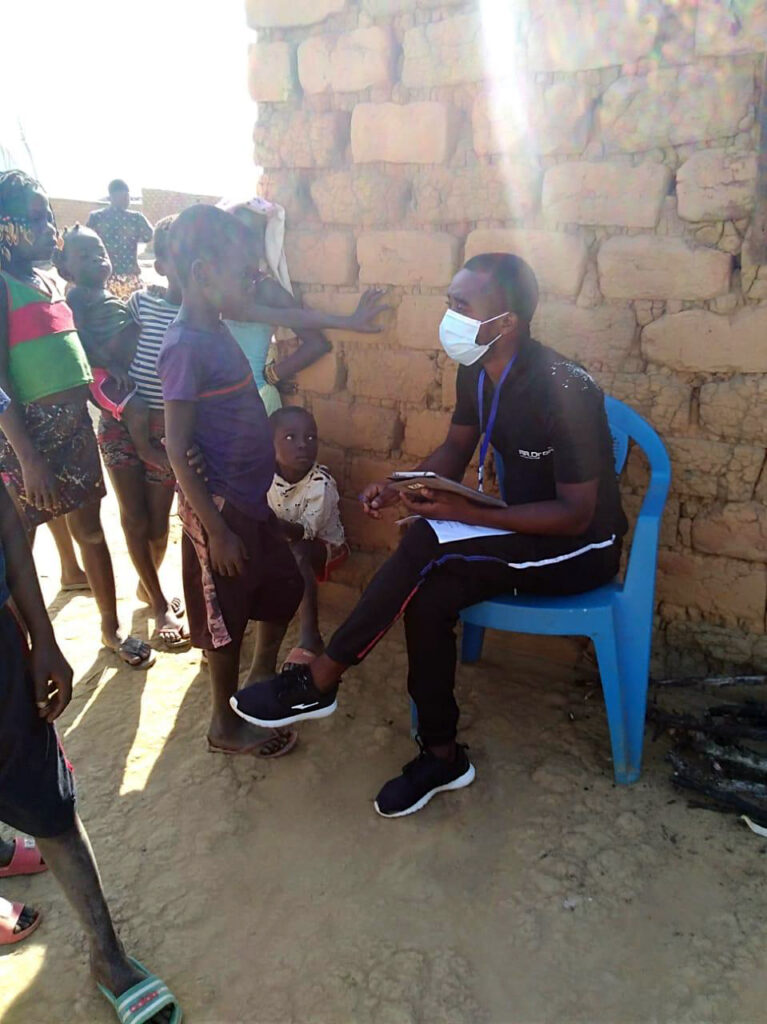
7. Data collector interviewing SAC

8. Data collectors inserting data into ESPEN Collect App
Dra. Elsa Mendes from the Angolan National NTD Control Program led the STH and SCH mapping teams that surveyed 8160 School Aged Children in Uíge and 3420 in Zaire. She said:
“The team was committed throughout the field implementation, and we ended with the certainty of having fulfilled the duty. A new stage will begin for these three provinces, we believe that the results will constitute the basis for reflection on what measures and strategies to follow for the control of SCH and STH In Uíge, Zaire and Huambo.”
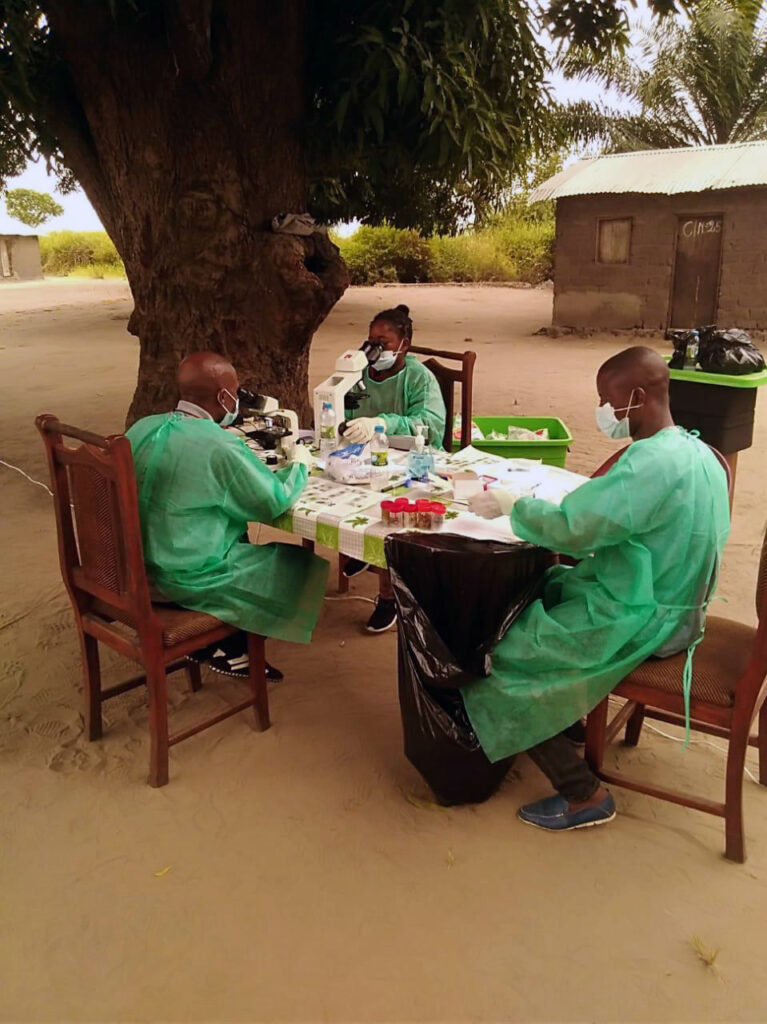
9. Team members working in Huambo
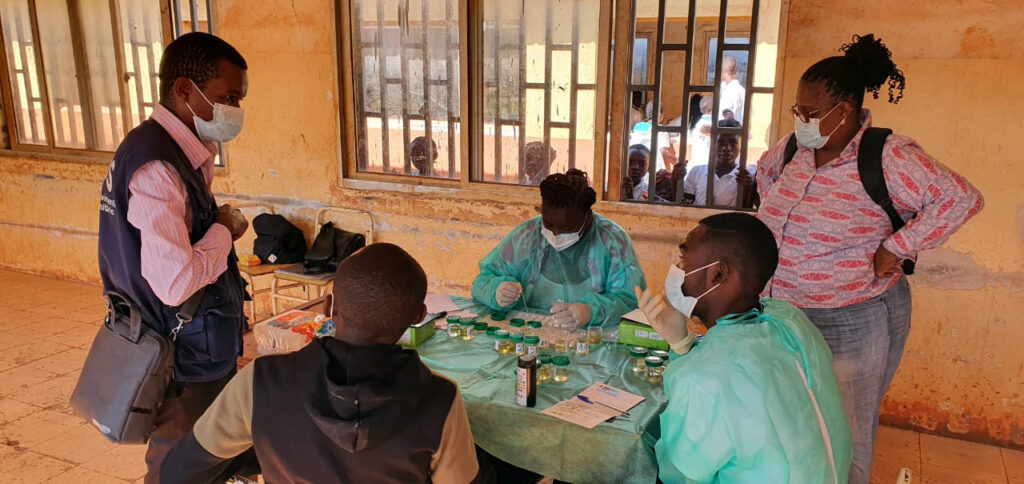
10. Team members working in Huambo

11. Team members working in Zaire (Soyo municipality)
Mapping of STH and SCH is essential to better understand how and where infection persists, and potential risk factors associated with this, and are also essential to determine the location and periodicity of MDA. Since 2014 mapping, MENTOR has been supporting the MoH in Angola to implement MDA activities. As per WHO recommendations, after 5 years of MDA, it is essential to assess the impact of interventions and refine MDA strategy implementation based on impact assessment information. The current study is essential not only to evaluate the progress achieved so far but also to redefine NTD control strategies in Angola so that control of the most common NTDs is accelerated in the upcoming years, providing a significant contribution to the WHO NTD Roadmap 2020-2030 objective achievement.

12. Team member registering child to take part in survey
Para ler em Português, clique aqui
View entire gallery here:

1. Mapping in Huambo 
2. Registering an SAC to take part in the survey providing a unique ID number 
3. Team member preparing urine samples for RDT analysis 
4. Team member performing RDT 
5. Team member preparing for microscopy using urine filtration 
6. Team member preparing stool samples for Kato Katz technique 
7. Data collector interviewing SAC 
8. Data collectors inserting data into ESPEN Collect App 
9. Team members working in Huambo 
10. Team members working in Huambo 
11. Team members working in Zaire (Soyo municipality) 
12. Team member registering child to take part in survey

